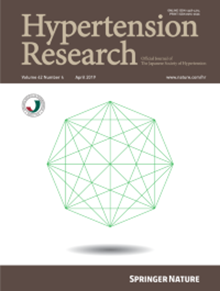The 14-year cumulative genetic high blood pressure and risk of type 2 diabetes in Korean: observational and Mendelian randomization evidence
IF 4.3
2区 医学
Q1 PERIPHERAL VASCULAR DISEASE
引用次数: 0
Abstract
This study aims to evaluate the causal association of blood pressure (BP) with type 2 diabetes (T2D) and assess the cumulative effect of genetic predisposition of high BP or glycemic for future clinical in Korea. To assess the bidirectional causal association between fasting blood sugar (FBS) and systolic blood pressure (SBP) in the large biobank, five MR methods (a 2-stage least squares (2SLS) regression, inverse-variance weighted (IVW), 2 median-based (simple and weighted) and MR-Egger) were applied using the weighted genetic risk score (wGRS). A bidirectional causality was found in all five methods, and there was no horizontal pleiotropy. Using the 2SLS regression method, genetically determined 10 mm/Hg elevation of SBP caused an increased 0.63 mmol/L FBS (p < 0.0001). Men had a particularly strong bidirectional causal relationship. Distinct predicted trajectories based on genetically determined SBP and FBS levels were identified using group-based trajectory modeling (GBTM). To assess the risk of subsequent hypertension or T2D in each trajectory, the Cox proportional hazard model, and adjusted covariates (including wGRS) were conducted. An uncontrol predicted SBP pattern (fluctuated plot) had a higher risk of subsequence T2D than a control-predicted pattern (HR: 1.25, 95% CI: 1.00–1.58). In the Korean middle-aged, it was significantly demonstrated that there is a bidirectional causality between high BP and T2D, which is different from previous studies in Europe. Specially, cumulative high blood pressure predisposition by the genetic variants may affect to risk of T2D incidence. Prevention of high BP must be followed in lifespan.

求助全文
约1分钟内获得全文
求助全文
来源期刊

Hypertension Research
医学-外周血管病
CiteScore
7.40
自引率
16.70%
发文量
249
审稿时长
3-8 weeks
期刊介绍:
Hypertension Research is the official publication of the Japanese Society of Hypertension. The journal publishes papers reporting original clinical and experimental research that contribute to the advancement of knowledge in the field of hypertension and related cardiovascular diseases. The journal publishes Review Articles, Articles, Correspondence and Comments.
 求助内容:
求助内容: 应助结果提醒方式:
应助结果提醒方式:


